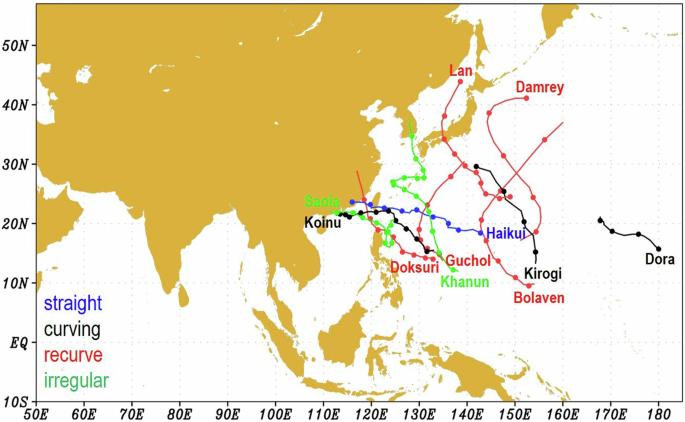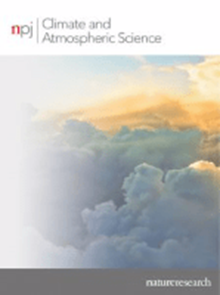评估用于预测东亚和西太平洋地区天气的五个全球人工智能模型
IF 8.5
1区 地球科学
Q1 METEOROLOGY & ATMOSPHERIC SCIENCES
引用次数: 0
摘要
近年来,人工智能(AI)技术的发展催生了基于机器学习的天气预报(MLWP)系统。全球出现了盘古天气、FourCastNet v2(FCN2)、GraphCast、FuXi 和 FengWu 五种著名的 MLWP 模型。本研究利用 ERA5 的相同初始条件对这些模式进行了同质比较。从 2023 年 6 月到 11 月,对东亚和西太平洋地区进行了性能评估。评估内容包括指定区域内的均方根误差和异常相关系数、台风路径和强度预测,以及台风 "海葵 "的案例研究。结果表明,"风云 "是表现最好的模式,其次是 "富溪 "和 GraphCast,FCN2 和盘古气象排名靠后。通过平均五个模型的预测结果而构建的多模型集合表现出卓越的性能,可与 "凤五 "相媲美。对于 2023 年的 11 个台风,"凤舞 "的路径预测最为准确,但强度误差也最大。本文章由计算机程序翻译,如有差异,请以英文原文为准。

Evaluation of five global AI models for predicting weather in Eastern Asia and Western Pacific
Recent development of artificial intelligence (AI) technology has resulted in the fruition of machine learning-based weather prediction (MLWP) systems. Five prominent global MLWP model, Pangu-Weather, FourCastNet v2 (FCN2), GraphCast, FuXi, and FengWu, emerged. This study conducts a homogeneous comparison of these models utilizing identical initial conditions from ERA5. The performance is evaluated in the Eastern Asia and Western Pacific from June to November 2023. The evaluation comprises Root Mean Square Error and Anomaly Correlation Coefficients within the designated region, typhoon track and intensity predictions, and a case study for Typhoon Haikui. Results indicate that FengWu emerges as the best-performing model, followed by FuXi and GraphCast, with FCN2 and Pangu-Weather ranking lower. A multi-model ensemble, constructed by averaging predictions from the five models, demonstrates superior performance, rivaling that of FengWu. For the 11 typhoons in 2023, FengWu demonstrates the most accurate track prediction; however, it also has the largest intensity errors.
求助全文
通过发布文献求助,成功后即可免费获取论文全文。
去求助
来源期刊

npj Climate and Atmospheric Science
Earth and Planetary Sciences-Atmospheric Science
CiteScore
8.80
自引率
3.30%
发文量
87
审稿时长
21 weeks
期刊介绍:
npj Climate and Atmospheric Science is an open-access journal encompassing the relevant physical, chemical, and biological aspects of atmospheric and climate science. The journal places particular emphasis on regional studies that unveil new insights into specific localities, including examinations of local atmospheric composition, such as aerosols.
The range of topics covered by the journal includes climate dynamics, climate variability, weather and climate prediction, climate change, ocean dynamics, weather extremes, air pollution, atmospheric chemistry (including aerosols), the hydrological cycle, and atmosphere–ocean and atmosphere–land interactions. The journal welcomes studies employing a diverse array of methods, including numerical and statistical modeling, the development and application of in situ observational techniques, remote sensing, and the development or evaluation of new reanalyses.
 求助内容:
求助内容: 应助结果提醒方式:
应助结果提醒方式:


